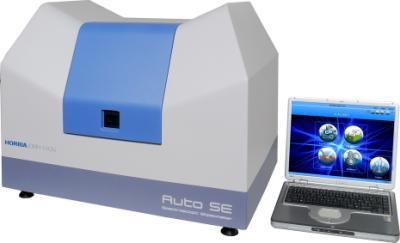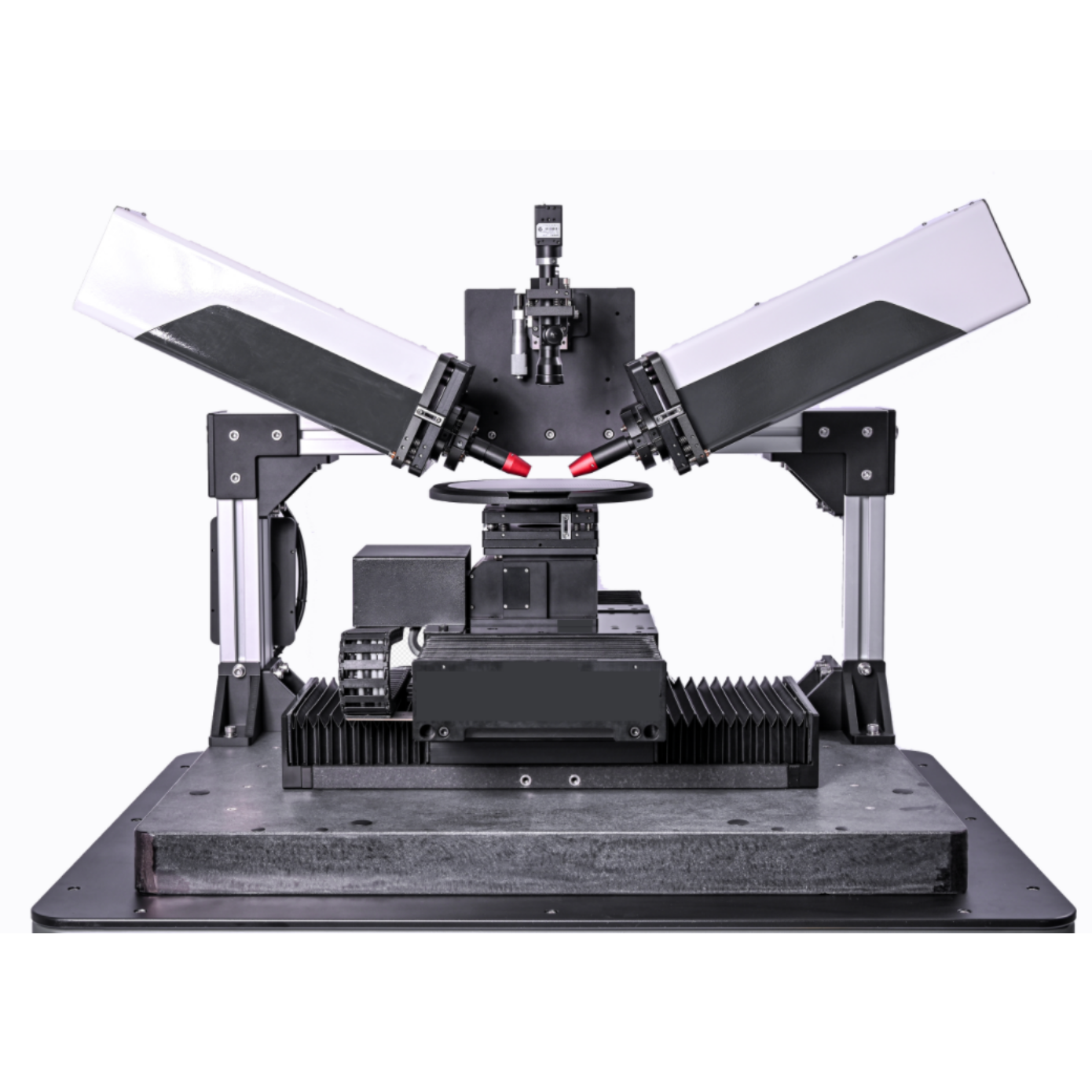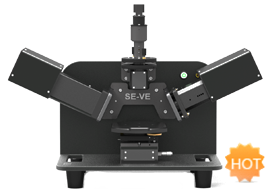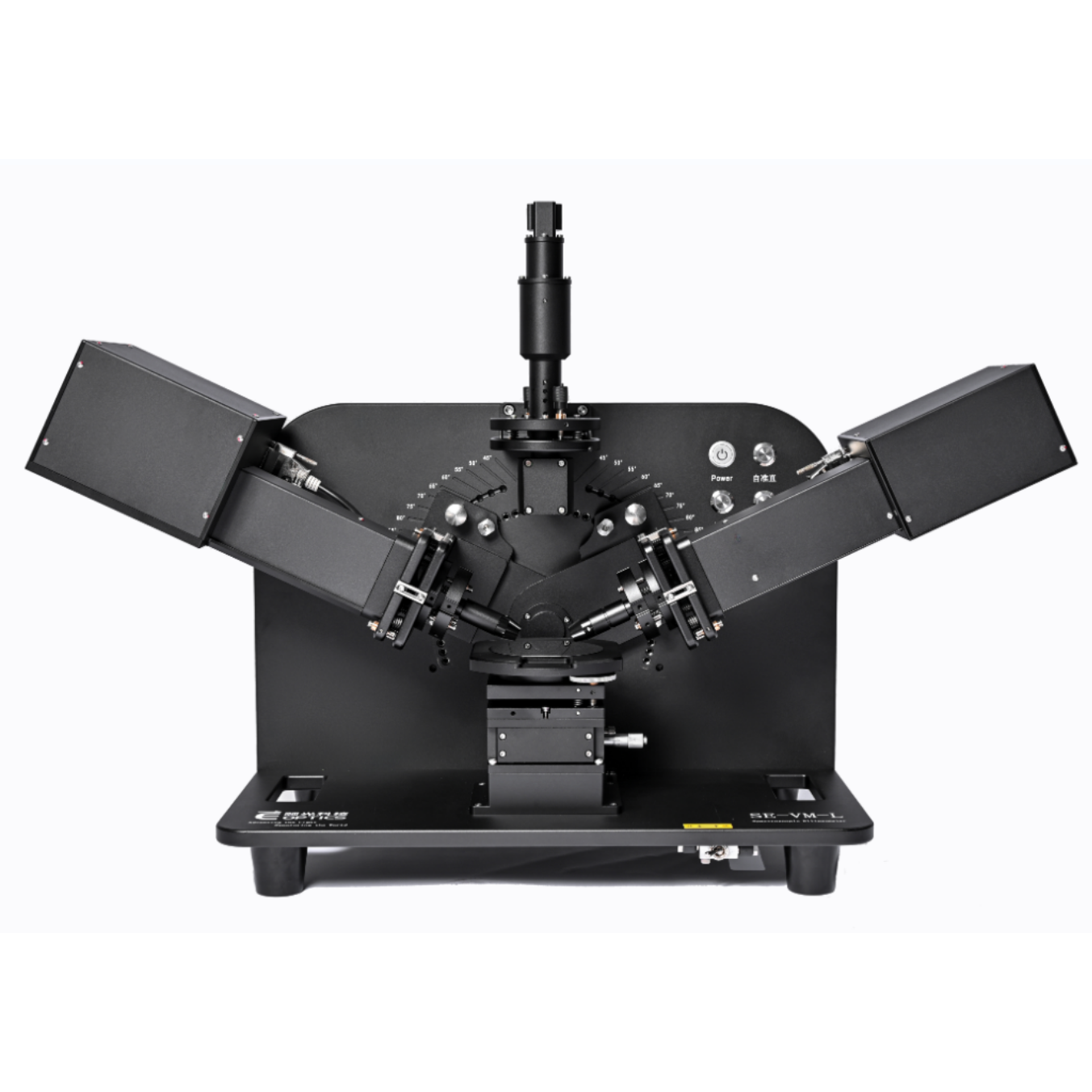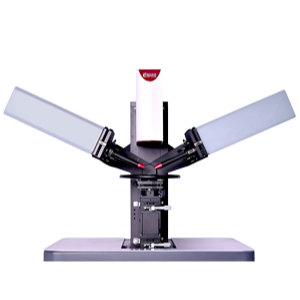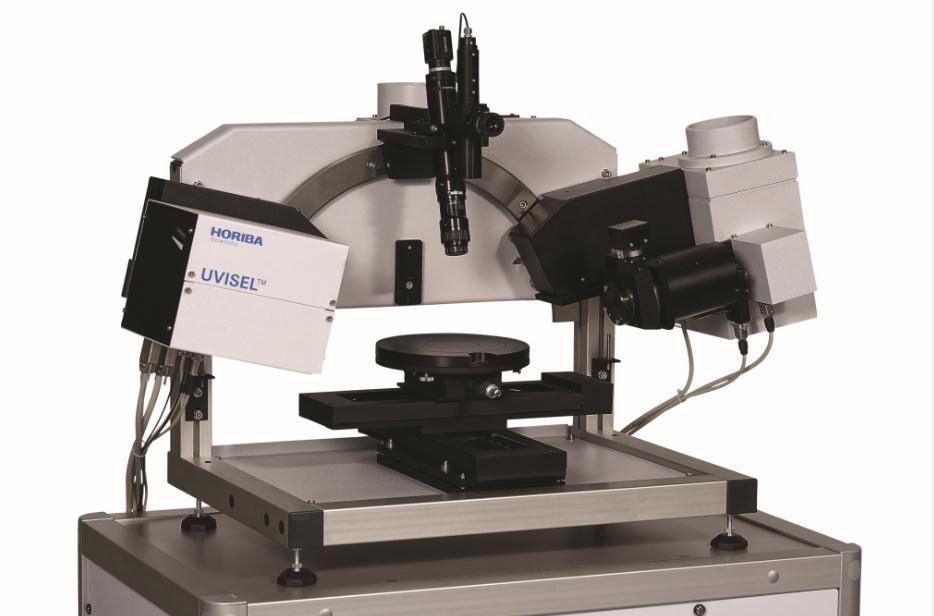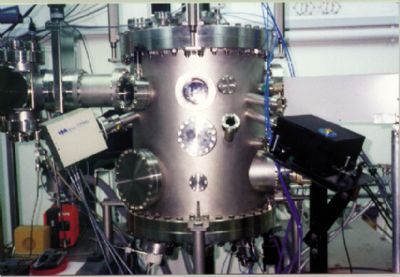采用UVISEL相调制型椭圆偏振光谱仪对chalcogenide glass样品进行分析,研究其相应光学性质。
方案详情

SpectroscopicEUipsometryExplore the futureEMISSION · FLUORESCENCE ·FORENSICSi·GRAIINGS FOEM·RAMAN·OPIICAL SPECTROSCOPY ·THIN FILM Characterization ofChalcogenide Glasses Celine Marchand - Application Scientist - Thin Film Division UVISEL Large scale production has been the driving force in the search for more cost effective infrared opticalsystems. Infrared transmitting chalcogenide glasses are the ideal candidate for such applications.Their unique optical properties are very useful for the manufacture of passive and active integratedoptical devices such as writing channel waveguides and the fabrication of IR lenses, windows and fil-ters used in thermal imaging systems. High efficiency lasers, light amplifiers, and light up-convertershave been successfully realized by chalcogenide glasses doped with lanthanide ions.S. Introduction to Chalcogenide Glasses Semiconducting glasses, namely chalcogenideglasses, contain one or more of the chalcogenelements (groupVI elements S, Se, Te) as alloy el-ements. They behave as semiconductors, or moreprecisely, they exhibit amorphous semiconductorbehaviour with band gap energies from 1 to 3 eV.As shown by the horizontal sequence chalcoge-nide glasses possess properties intermediate be-tweenthose of organic polymersand oxideglasses. Their overall properties are representedon the vertical sequence. Characterization of chalcogenide glasses and semicon-ductors in comparison with other materials. Chalcogenide glasses exhibit excellent trans-mission in the near and far infrared spectralregion. They are high refractive index materi-als with a nonlinear refractive index typicallyx100 that of silica, with a low maximum pho-non energy. The glasses have good solubilitytowards rare earth elements ions (REI) suchas lanthanum, and also have the advan-tage of high chemical and thermal stabili-ty. Their low phonon energy and highrefractive index provide them with a lowprobability of multiphonon relaxationand high radiative transition probabili-ties of rare-earth ions. In this way thematerials have increased lumines-cence efficiency. The high chemical and thermalstability allows the creation of easy-to-prepare optical devices. Thehigh solubility of REls in the chalcogenide hostmakes it possible to realize thin film technologieswith high concentration of REls in active media.Furthermore chalcogenide glasses are very impor-tant materials owing to their photo sensitivity, as thisallows preparation of writing channel waveguides.The writing channel is achieved by laser illumina-tion of the glass at a wavelength close to near theband gap of the glass. As the glasses are photosensitive it is possible to modify the refractive indexof the glass in a controlled manner. This techniqueis promising because it bypasses the standard pho-tolithographic processes needed to obtain channelwaveguides. A very important advantage for using chalcogenideglasses in integrated optics is their availability asthin films. As a result it is important to know the lay-er thickness with high accuracy and precision. Aswith all optical devices it is also important to char-acterize the linear optical constants accurately sothat their non-linear optical properties canbeknown. AszS3 and Ge28Sb12Se60 characterization The non destructive characterization of various Chalcogenide Glasses was successfully carried out by Spectroscopic Ellipsometry. The ellipsometric data were collected at an angle of incidence of 70° using the Jobin Yvon UVISEL NIR Ellipsometer. The UVISEL Spectroscopic Phase Modulated Ellip-someter is a unique instrument that provides signif-icant advantages for display applications whencompared to conventional ellipsometers. Its tech-nology is the most suitable for making accurate thinfilm measurements on transparent substrates as theDeltaPsi2 ellipsometry software includes advancedmethods for the automatic correction of backsidereflections from transparent substrates. SpectroscopicElipsometry As2Ssand Ge28Sb12Se6o were deposited on glass substrates by cathodic sputtering. Both the refractiveindex and thicknesses of each layer were extracted from the SE data analysis. The optical constantsdepend on the deposition technique and their composition, and were determined by using the Tauc-Lorentz dispersion formula. It is often the case with such materials that there is a change in opti-cal properties through the layer. This can be included with the modelby applying a graded refractive index to the structure. For this struc-ture a great improvement to the x? value (goodness of fit) was foundwhen compared to a simple index model. The graded layer used specified one value of index at the bottom ofthe chalcogenide layer, and one index for the layer top. The indexwas calculated as a linear function between these two values. The fit was made across the spectral range 260-1700 nm. RoughnessGe28 Sbi2Se6oGlass 5131.6nm This modelincluded a roughness layer on top of the glass. Theroughnesslayer was described by the Effective Medium Approxima-tion (EMA), and was calculated by as a mixture of 50% of chalcoge-nide glass and 50% voids. Owing to the large number of interference fringes that are foundwhen measuring thick films it is necessary to have an optical systemthat has high spectral bandpass and full control of scan step size sothat the fringes can be measured accurately. The UVISEL NIR meetsboth of these requirements, and as the user can specify a small stepsize, the fringes can be measured with high precision. For this exam-ple the fit was made across the transparent part of the spectrum from620-1700 nm (0.7-2 eV) with a very small step size. Conclusion Characterization of various chalcogenide glasses was performed successfully using the UVISEL NIR Spectroscopic Phase Mod-ulated Ellipsometer. The UVISEL NIR ellipsometer allows the determination of film thickness and optical properties with veryhigh accuracy even where the film is many microns thick, and deposited on a transparent substrate.The versatility of the UVISEL NIR in terms of instrument resolution, sensitivity and step size and the power of the instrumentsoftware make the UVISEL NIR the most suitable instrument for determination of these sample structures. This document is not contractually binding under any circumstances- Printed in France-10/2003 France
确定
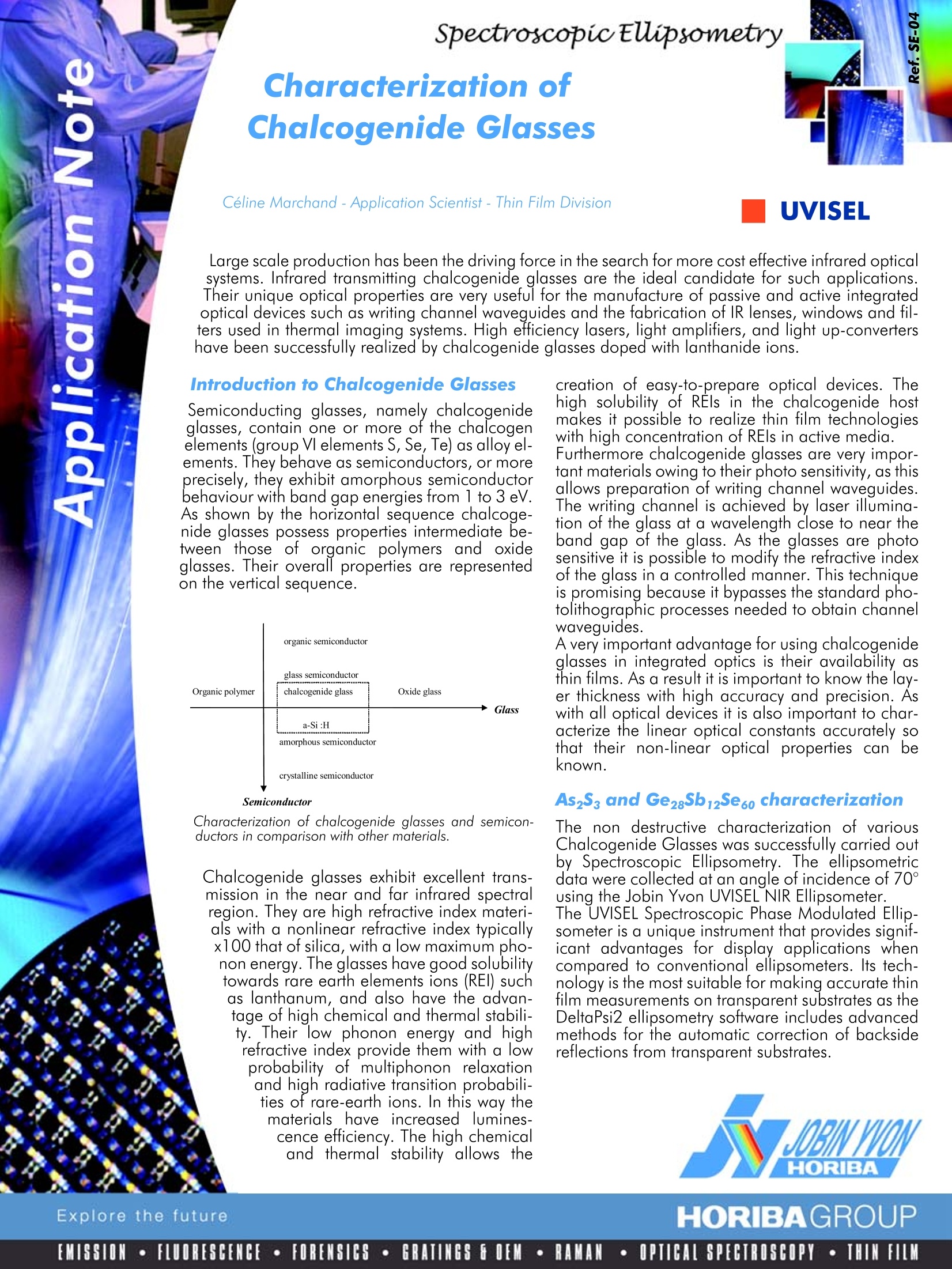
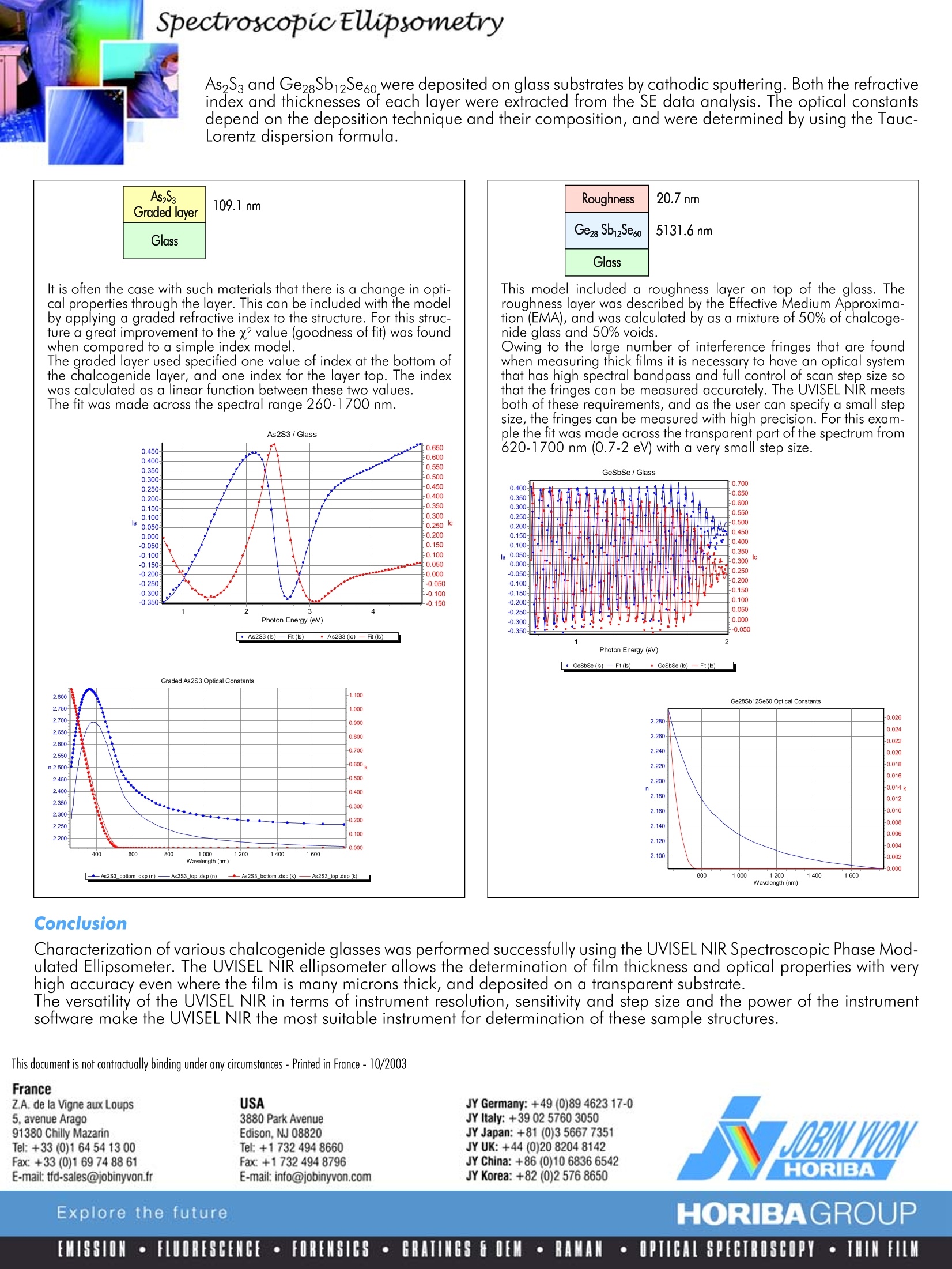
还剩1页未读,是否继续阅读?
HORIBA(中国)为您提供《charactrization of chalcogenide glass》,该方案主要用于其他中--检测,参考标准--,《charactrization of chalcogenide glass》用到的仪器有HORIBA Auto SE一键式全自动快速椭偏仪 、HORIBA UVISEL Plus研究级经典型椭偏仪
推荐专场
相关方案
更多
该厂商其他方案
更多

